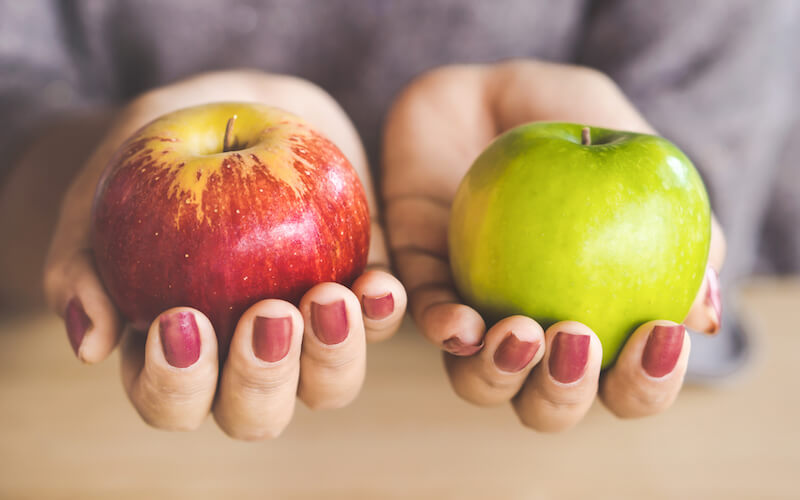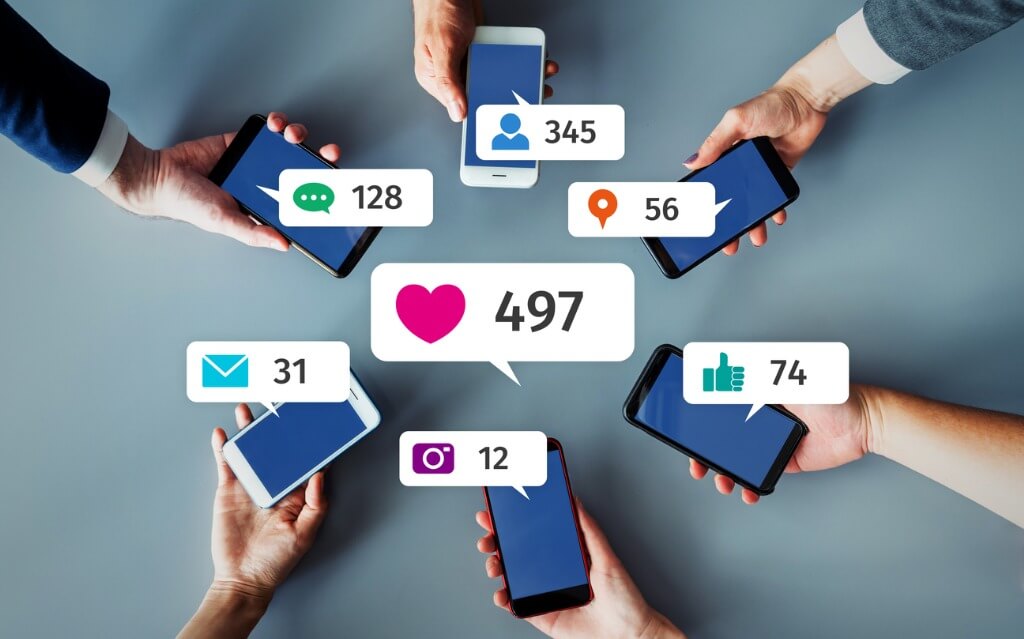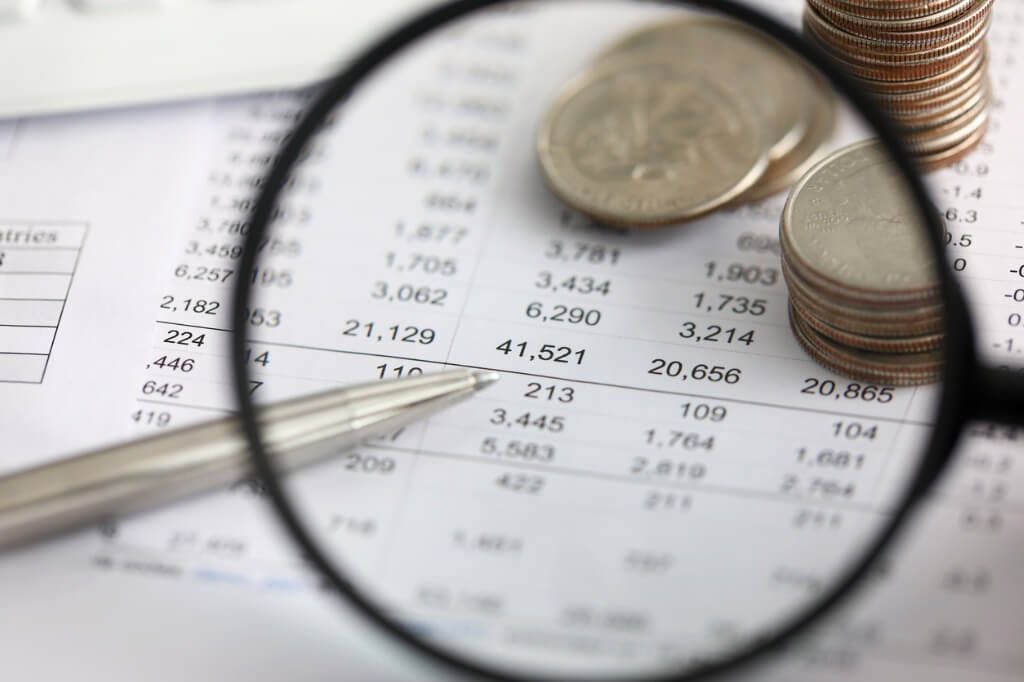Qualitative Vs. Quantitative Data: Definitions, Uses & More
For different research questions, different types of data will be useful. Quantitative and qualitative data are the two broad categories your information will fall into. Understanding the differences between these two will help you understand the uses of each. This article will help you get the most out of your research and generate more insightful results. We will discuss the characteristics of each: qualitative vs. quantitative, along with examples of research and data and how to analyze both.
Qualitative vs. Quantitative Data: Definitions
Qualitative Data Definition
Qualitative data is descriptive and explores the “how” and “why” behind behaviors or experiences. It captures emotions, opinions, and observations, often gathered through interviews, focus groups, or usability tests. These methods encourage deep conversations and observations, creating a rich understanding of the bigger picture. For instance, it might reveal how customers feel about a product or what resonates with them emotionally. This type of data is expressed in words, offering depth and context to research.
Quantitative Data Definition
Quantitative data, on the other hand, is numerical and measurable. It answers “how much?” or “how often?” and is used to identify patterns or make comparisons. Common collection methods include surveys, experiments, and counting. This type of data is objective and structured, making it perfect for identifying trends, comparing results, and making predictions. For example, it could measure satisfaction ratings, sales percentages, or product usage frequency.
How are Qualitative and Quantitative Data Different?
Both types of data are valuable in their own way: qualitative for its depth and storytelling, and quantitative for its precision and clarity. Together, they create a full picture. While they complement each other quite well, they do have their differences. Below are their key distinctions:
Definition:
- Qualitative: Non-numerical, descriptive, and open-ended.
- Quantitative: Numerical, measurable, and close-ended.
Data Collection:
- Qualitative: Gathers insights through observations, interviews, and open-ended surveys.
- Quantitative: Uses tools like structured questionnaires, measurements, and experiments.
Focus:
- Qualitative: Explores experiences, feelings, and behaviors.
- Quantitative: Focuses on quantities, frequencies, and trends.
Analysis:
- Qualitative: Analyzed for themes, patterns, and narratives.
- Quantitative: Analyzed using statistical models, percentages, and numerical comparisons.
Use Cases:
- Qualitative: Ideal for exploratory research and understanding subjective aspects of human experience.
- Quantitative: Best for testing hypotheses, identifying correlations, and drawing generalizable conclusions.
Quantitative vs. Qualitative Data Examples
A great way to remember these things is to look at the words themselves. Quantitative deals with quantity. Qualitative refers to qualities. The key is in the term. To further understand these types of data, we will be using a simple example. We will set up a series of mini-experiments, and show how and when you would use each.
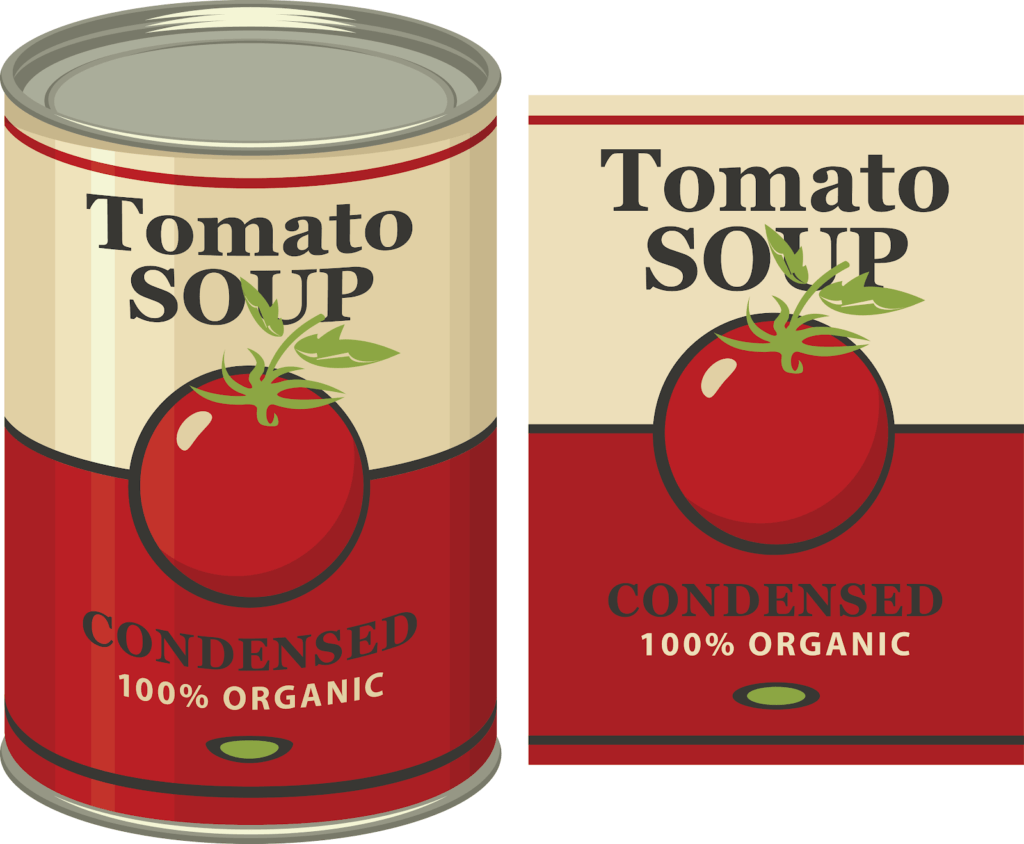
Consider this humble can of stock-image tomato soup. You are a product researcher, about to launch a new brand to take the lunch industry by storm. You plan to give it to 100 participants and collect information for your research project.
Qualitative data about the soup refers to how it could be characterized. The soup is red and too salty. The cans feel heavy. Descriptions they wrote of the taste and color are your qualitative data. For example, maybe they say it wasn’t as good as a name brand.
Quantitative data is numerical data. A measure of calories is quantitative. The number of people who said it was good, or bad—that’s quantitative data. The mass of the 100 cans you measured beforehand to get a box strong enough to support all of them without breaking is another example.
Quantitative Data Examples in the Soup Experiment
- 100 Cans of Soup, 1 Per Person
- 78 People Liked the Soup
- 21 People Felt it was Too Salty
- 36 People Said they Would Buy this Over a Competitor
- The Average Rating out of 10 was a 6.6
Qualitative Data Examples in the Soup Experiment
- Participants Reported Feeling Full
- A Taster Said the Soup Was “My Favorite Ever”
- Taster Saying it Was “Saltier Than the Ocean”
- One Person Said it Made Them Want a Grilled Cheese
- People Were Observed Using Bread to Get the Last Bit of Soup
Understanding the Quantitative versus Qualitative Example
A common misunderstanding is that all things regarding people’s experiences are qualitative. If you count the number of people who felt it was served too hot, this is quantitative data. While the number describes an experience, it is the number we are using to quantify their feelings about the temperature. Inversely, if we asked them to describe it, the description of “too hot” and “it burned my mouth” are qualities they experienced.
Qualitative vs. Quantitative: Collecting and Analyzing Data
How To Collect and Use Quantitative Data for Research
Quantitative research generally has a higher experimental value. This type of research can be more easily compared to a control group. It can also have statistical significance, a measure of data validity. This type has high reliability. Quantitative information works well for methodologies that require statistics-based information.
In our research, we have used both. Every year, we publish an annual report on B2B software buying. This focuses on the state of our industry and compares buyer and vendor experiences. This research gathers both qualitative and quantitative data.In our research, we have used both.

Here is a perfect example of quantitative data. Each number each reflects a percentage of respondents who chose a certain option in the survey we made.
Surveys are a fantastic way to get measurable information from large groups of people. You can ask people to rank products or evaluate them on a numerical scale. This can also take the form of selecting which option best describes the person’s feelings. For quantitative data, researchers tend to ask for either a response in the form of a number or give a number of options to choose from. Tools like SurveyMonkey are commonplace.
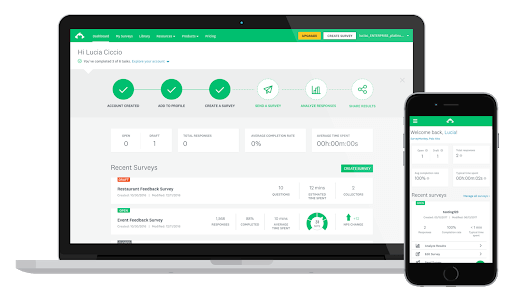
There are many other methods of collecting this type of info.
Physical measurement tools like scales and rulers are classics. You can also take advantage of existing information.
A document review of sales records is Quantitative. This could be done to find out existing market trends.
A/B testing is a common method of directly comparing two products or ideas in a quantitative manner. In this method, one controlled variable is evaluated with different versions of similar subjects. This results in measurable insights that are comparable to control. A/B testing is a great way of testing a hypothesis. You would use this to evaluate which version of a product performs better in an empirical, objective way. For example, does the green button or the blue button get more clicks?
In doing quantitative analysis, the key is statistical significance. The sample size will usually be large. Researchers use sampling methods to avoid biases. Here is a calculator you can use to determine how many people you would need to sample to get accurate results. This informs how many participants you would need to make your data statistically useful.
How To Collect and Use Qualitative Data for Research
Qualitative research is great for insights into how a product feels to use and how people interact with it. This will provide more detailed information, and is better for human interactions. For our soup example, product research may use the information to tweak the recipe to improve taste or color. This can involve in-depth interviews and other qualitative research methods. This research method allows for more insight from fewer people.
For our B2B Buying Disconnect survey, the qualitative data came in the form of respondents’ feelings on major trends. Here, we see descriptions of behavior and personal experiences.
The major benefit of qualitative information is the detail and human-nature insight it can provide. In Qualitative research, surveys usually include more open-ended questions.
Usability testing tools are a classic way to gain insight into the experience of a user. In this, participants are asked to try and use a product. They are often observed and then questioned about how they felt it went. For user experience and interface designers, this feedback can be vital. Follow-up questions can allow for much greater detail of information. They also allow for branching question sets.
Focus groups are another common qualitative approach. In this, a small but representative sample of participants is asked for their ideas and feedback on a product or concept. These are a staple of market researchers and advertising professionals.
If your motivation is to explore characteristics and generalizations, this will work well for you. Qualitative data is perfect for human emotion and experiences. It measures in more natural settings and can offer non-numerical data. It can also help you uncover “unknown unknowns.” Through qualitative analysis, researchers often learn which variables they should test. From here, they can measure their area of study in a quantitative method. This allows for more numerical, testable information.
Qualitative vs. Quantitative Recap
| Quantitative | Qualitative | |
| Category | Quantity | Traits |
| Examples of Data | Mass, Number of Objects, Width in Feet/Meters | Color, Texture, “Larger than X,” Experiences |
| How to Gather | Measurement, Counting, Surveys | Observation, Explanation, Surveys, Open-Ended Questions |
| Analysis Methods | Cross Tabulation, Trend Analysis, Data Visualization | Content Analysis, Narrative Analysis, Ethnography, Quotes, Natural Language Processing |
| Best For: | Statistical Analysis, Comparison to a Control group | Descriptions, Experiences, Human Behavior and Emotions |
Qualitative and Quantitative Data: The Bottom Line
In research, both qualitative and quantitative data play crucial roles. Qualitative data provides depth, exploring the “why” behind behaviors and preferences versus quantitative data, which is more broad and offers measurable, objective insights that can be compared and tested. Together, they create a powerful synergy that can guide informed decision-making.
When choosing between these data types, consider your research goals:
- Use qualitative data when you need rich, detailed insights into experiences or emotions.
- Use quantitative data when you need measurable, comparable outcomes to validate your findings.
Ready to explore your Data Discovery Options? Visit our comprehensive Data Discovery and Visualization Platforms page to compare features, read user reviews, and find the perfect solution for your business. Your ideal data visualization tool is just a click away!







